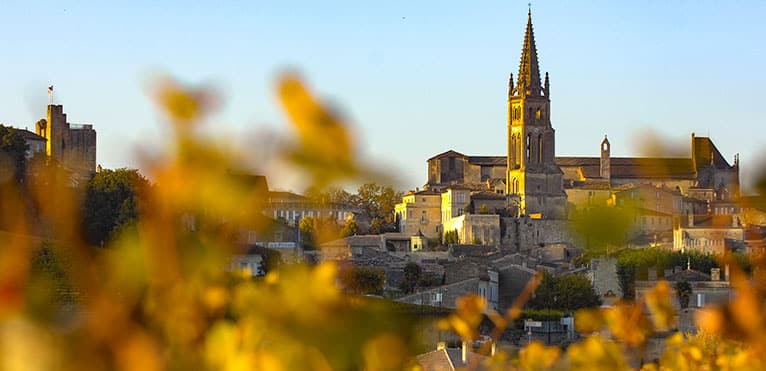
Contents
The name of this appellation already evokes the Bordeaux region, a region that has gained worldwide recognition over the years. Since 2009, the Côtes-de-Bordeaux appellation has grouped together five appellations, making it the 4th largest in France. Appellation d’Origine Contrôlée de France red wine producer in France.
What’s more, it has turned its location into a strength by developing wine tourism thanks to the landscapes and rich heritage of this increasingly attractive region.
The age-old history of AOC Côtes-de-Bordeaux
Viticulture has been practiced in the region since antiquity. However, wine production in the Bordeaux region expanded significantly following the union of Eleanor of Aquitaine with Henry Plantagenet. This marriage encouraged the exchange of Bordeaux products with the London market. From then on, the Bordeaux vineyards grew and spread.
The history of the Côtes-de-Bordeaux appellation is closely linked to that of the Bordeaux vineyards as a whole, since it includes 5 appellations: Blaye-Côtes de-Bordeaux, Cadillac-Côtes-de-Bordeaux, Bordeaux-Côtes-de-Francs, Castillon-Côtes-de-Bordeaux and Sainte-Foy-Côtes-de-Bordeaux.
Today, 950 producers make wine for this appellation, producing a total of 500,000 hectolitres of red wine, or 1 in every 10 bottles produced in the Bordeaux region.
Ideal weather conditions for Côtes-de-Bordeaux vineyards
The vineyards of the Côtes-de-Bordeaux appellation cover 12,000 hectares of land on the banks of the Dordogne and Garonne rivers. This location close to water is a strength for the vineyard, as rivers are good thermal regulators. It’s also this proximity to water that gives the soil a clay-limestone composition that favors the growth and good health of the vines.
What’s more, the sunny hillsides on which the vineyards are located allow good rainfall runoff and therefore good soil drainage, an asset for growing grape varieties.
A wide variety of grape varieties are grown in the appellation, which produces both red and white wines. Red wines are made from Cabernet Sauvignon, Cabernet Franc, Merlot and a few other secondary grape varieties. Smaller quantities of white wines are made from varieties such as Sauvignon, Sauvignon Gris, Sémillon, Muscadelle and sometimes Colombard and Ugni Blanc.
AOC Côtes-de-Bordeaux produces round, smooth reds and fruity whites.
To the eye, the color of red wines is intense and sustained, tending towards dark colors bordering on black. When young, the nose offers intense, fruity aromas with hints of black and red fruits. With age, the bouquet becomes more complex, with notes of spice and musk. The red wines of AOC Côtes-de-Bordeaux are round, offering the palate softness and suppleness thanks to their well-balanced tannins. These wines soften with age and should be enjoyed 5 years after bottling.
The same is true for white wines, whose full potential is only expressed after 5 years of cellaring. These wines have a lively attack, then become round and fat on the palate. They can be recognized by their pale yellow color tinged with greenish hues when dry, and their golden color when mellow. On the nose, they offer a palette of fruity aromas of pear and citrus, with floral notes enhanced by toasty hints.
Côtes-de-Bordeaux goes well with meat, fish or cheese
The different territories within the same appellation contribute to the diversity of its wines, which are elegant, round and structured. Red wines go perfectly with grilled red meats, duck or mushrooms. For example, they go well with beef entrecôte with French fries or lamb hash browns. They are best consumed between 15 and 17 degrees Celsius.
A perfect match for AOC white wines is shellfish, green vegetables and goat’s cheese. Enjoy them at between 8 and 10° with oysters from the Arcachon Basin, purple asparagus from the Blayais region or cod salad from Bacalan.
To accompany your dishes with the best wines from this appellation, we recommend choosing 2009 or 2010, which are exceptional vintages, or 2005 and 2016, which are very good vintages.
The Côtes-de-Bordeaux terroir boasts estates committed to respecting the environment
Château Réaut
Operated by the Réaut family for many years, this 26-hectare estate in the Cadillac-Côtes-de-Bordeaux appellation was bought by the Roederer group in 2003, with the ambition of turning the Château into a grand cru. In 2009, it was sold to a group of friends from Bordeaux and Burgundy, who decided to place the estate in a huge condominium with over 550 co-owners.
The estate’s human values are what make its reputation today, as are its exceptional location and the quality of its grape varieties, which enable Château Réaut to produce wines worthy of the Grands Crus Classés.
Château Prieuré Canteloup
This Château on Bordeaux’s right bank extends over 19 hectares, of which only 9 are densely cultivated, the owners having chosen quality over quantity. This estate has been family-owned for 3 generations, with respect for the environment as one of its primary commitments. The soil is cultivated without pesticides, and the estate is currently converting to organic viticulture.